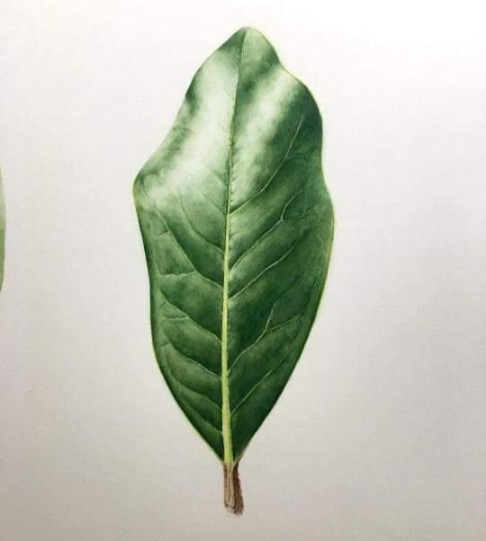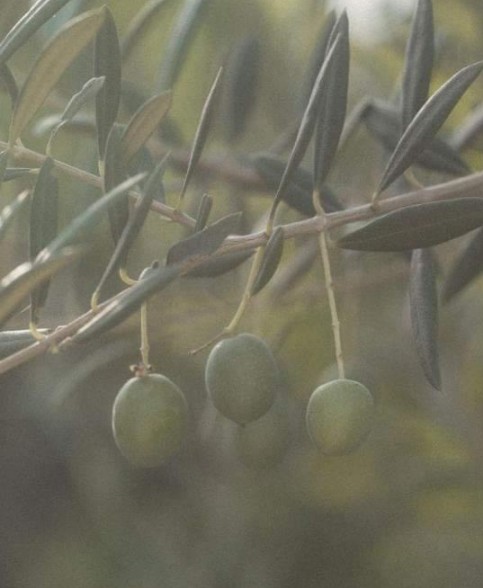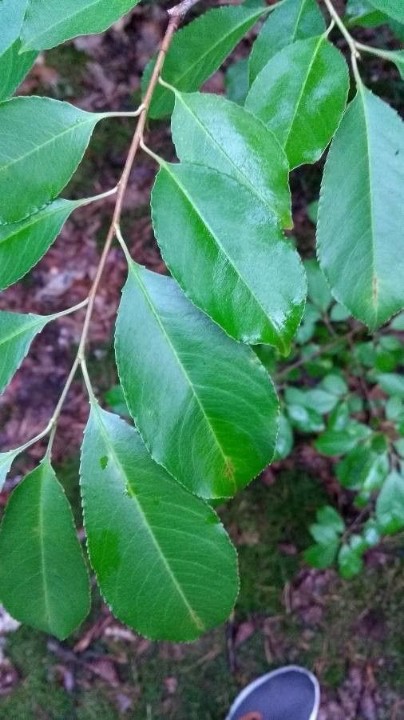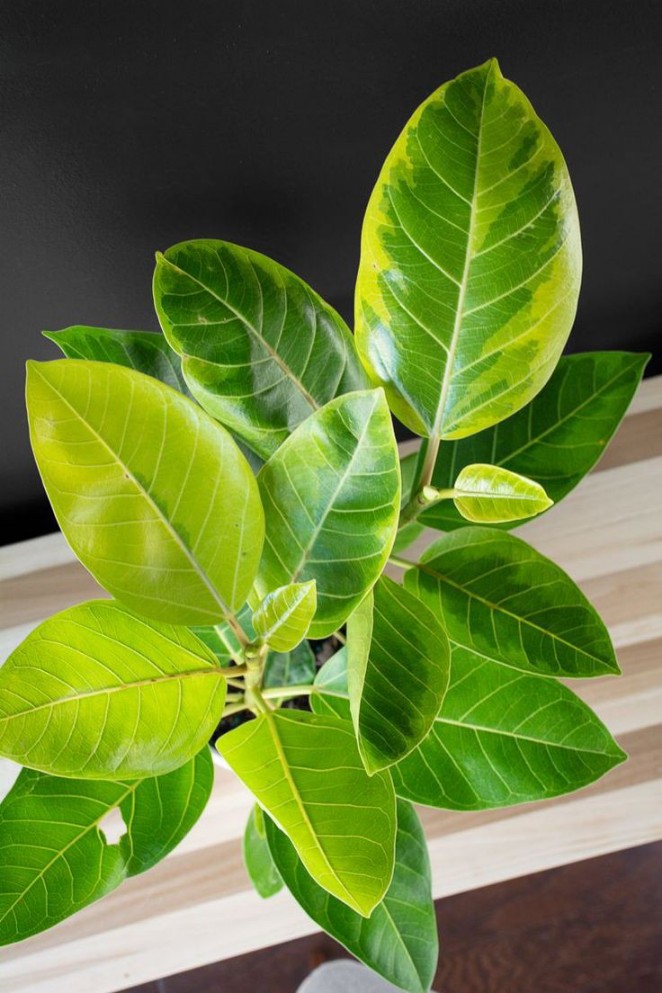Have you ever stopped to appreciate the diverse and intricate shapes that leaves come in? Among the various leaf shapes in the botanical world, the elliptical leaf stands out as a unique and fascinating example. In this article, we will delve into the world of Elliptical Leaf, exploring their characteristics, functions, and the plants that showcase these remarkable botanical features.
Introduction
The natural world is an exquisite tapestry of forms, colors, and functions. Leaves, as essential components of this living masterpiece, come in a multitude of shapes, each tailored to serve specific purposes. Among these shapes, the elliptical leaf stands as a testament to the ingenuity of nature’s designs.
What Are Elliptical Leaf?

Elliptical Leaf, as the name suggests, are characterized by their elongated oval or elliptical shape. They exhibit a smooth and continuous margin, free from serrations or indentations, which adds to their elegant appearance. These leaves vary in size, with some being small and delicate, while others grow to be more substantial and robust.
Characteristics of Elliptical Leaf
Elliptical Leaf possess distinct characteristics that set them apart in the realm of botanical diversity. These attributes contribute to their functionality, aesthetics, and ecological significance. Let’s explore the key characteristics that define Elliptical Leaf:
- Shape: The most prominent feature of Elliptical Leaf is their elongated oval or elliptical shape. This shape is defined by smooth, continuous margins that lack serrations or indentations.
- Symmetry: Elliptical Leaf are symmetrical along their central midrib. This symmetry creates a balanced and visually pleasing appearance, enhancing the overall aesthetics of the plant.
- Rounded Ends: The ends of Elliptical Leaf are rounded rather than pointed. This rounded edge adds to the gentle and graceful appearance of the leaf.
- Size Variability: Elliptical Leaf come in a range of sizes, from small and delicate to larger and more robust. This variability allows plants to adapt to different environmental conditions and ecological niches.
- Width Distribution: The widest point of the leaf is typically at or below the midpoint. This characteristic gives Elliptical Leaf their classic shape, maximizing the surface area exposed to sunlight.
- Venation: Vein patterns in Elliptical Leaf vary among species. While some display parallel venation, others may have a more complex network of veins that further enhances their visual appeal.
- Leaf Texture: The texture of Elliptical Leaf can vary from smooth and glossy to slightly textured, depending on the plant species. This texture contributes to their tactile and visual appeal.
- Leaf Arrangement: Elliptical Leaf can be arranged alternately or in an opposite pattern along the stem. This arrangement affects how light is captured and utilized by the plant.
- Photosynthetic Efficiency: The elongated shape of Elliptical Leaf allows for a larger surface area exposed to sunlight. This enhanced surface area facilitates efficient photosynthesis, leading to the production of vital nutrients.
- Transpiration Regulation: The smooth edges of Elliptical Leaf contribute to water conservation by minimizing water loss through transpiration. This adaptation is particularly beneficial in arid environments.
- Adaptive Benefits: The overall shape of Elliptical Leaf provides several adaptive advantages. Their ability to capture ample sunlight and conserve water makes them well-suited for various habitats.
- Color Variations: The color of Elliptical Leaf ranges from various shades of green to hues that change with seasons. These variations add to the aesthetic appeal of plants throughout the year.
- Leaf Margin: The absence of serrations or indentations along the leaf margins is a distinctive feature of Elliptical Leaf This characteristic contributes to their smooth and elegant appearance.
- Leaf Apex: The apex, or tip, of Elliptical Leaf is usually pointed in a gentle manner, aligning with the overall soft and graceful contour of the leaf.
- Leaf Base: The base of Elliptical Leaf is generally tapered, allowing for a seamless connection to the stem. This tapering contributes to the leaf’s symmetrical and balanced appearance.
Plants Featuring Elliptical Leaf
Numerous plant species proudly display elliptical leaves. Here some examples of them:
Magnolia grandiflora:



Commonly known as the Southern magnolia, this tree boasts glossy elliptical leaves that exude elegance in gardens and landscapes.
Ficus elastica:


The rubber plant, with its robust elliptical leaves, is a popular choice for indoor decoration due to its air-purifying qualities.
Carya ovata:


The shagbark hickory tree showcases distinctive shaggy bark and elliptical leaves, adding rustic charm to natural settings.
Olea europaea:


The olive tree, with its silver-gray elliptical leaves, has cultural significance and is cultivated for its fruit and oil.
Prunus serotina:

Commonly known as black cherry, this tree showcases elliptical leaves and produces small dark cherries that are enjoyed by wildlife.
These plants showcase the diversity and beauty of elliptical leaves, each contributing unique characteristics to the botanical world.
- Adaptations and Benefits

Elliptical Leaf showcase a range of adaptations that contribute to their remarkable functionality and confer several benefits to the plants that bear them. These adaptations have evolved over time to enable these leaves to thrive in various ecological niches and fulfill essential roles within ecosystems. Let’s delve into the adaptations and benefits of Elliptical Leaf:
- Enhanced Sunlight Absorption: The elongated shape of Elliptical Leaf maximizes their surface area exposed to sunlight. This adaptation allows plants to capture ample sunlight for photosynthesis, the process through which they convert light energy into chemical energy.
- Efficient Photosynthesis: The increased surface area of Elliptical Leaf results in a higher chlorophyll content. This, in turn, enhances the rate of photosynthesis, leading to the production of sugars and oxygen crucial for plant growth and survival.
- Water Conservation: The smooth, continuous margins of Elliptical Leaf reduce water loss through transpiration. This adaptation is particularly beneficial in arid or dry environments where water availability is limited.
- Minimized Overheating: The elongated shape of Elliptical Leaf allows for efficient temperature regulation. Their extended surface area disperses heat and reduces the risk of overheating, especially in plants exposed to intense sunlight.
- Balanced Nutrient Distribution: The symmetrical arrangement of Elliptical Leaf along the central midrib ensures even nutrient distribution. This balanced distribution contributes to the overall health and vigor of the plant.
- Reduced Wind Resistance: Elliptical Leaf often have a streamlined shape that minimizes wind resistance. This adaptation is advantageous in windy environments, as it prevents excessive stress on the plant’s structure.
- Insect Deterrence: Some Elliptical Leaf possess chemical compounds or textures that deter herbivorous insects. This natural defense mechanism helps protect the plant from being consumed by pests.
- Versatile Habitat Range: The combination of adaptations in Elliptical Leaf—such as efficient photosynthesis, water conservation, and wind resistance—enables plants to thrive in diverse habitats, from open fields to forest understories.
- Seasonal Adaptability: Elliptical Leaf may change color with the seasons, serving as a way for plants to adapt to changing environmental conditions. This adaptation enhances their camouflage or signals important life cycle events.
- Aesthetic Appeal: The graceful and elongated form of Elliptical Leaf adds aesthetic value to plants, making them attractive choices for ornamental gardens and landscaping.
- Wildlife Habitat: The large surface area of Elliptical Leaf can provide habitat and shelter for insects, spiders, and other small organisms. These leaves can serve as platforms for webs and resting spots.
- Wind Pollination: Some plants with Elliptical Leaf rely on wind pollination. The streamlined shape of the leaves assists in the efficient dispersal of pollen, aiding in the reproduction of the plant.
- Adaptive Radiation: The adaptability of Elliptical Leaf has led to their presence in a wide range of plant species across diverse ecosystems. This phenomenon, known as adaptive radiation, contributes to the biodiversity of plant life.
- Cultural and Symbolic Significance: The aesthetic appeal and functional benefits of Elliptical Leaf have contributed to their symbolism in various cultures. They can represent growth, balance, and the cycle of life.
Importance in Horticulture
Horticulturists and landscape designers value plants with elliptical leaves for their versatility in design compositions. These leaves create a harmonious backdrop for various flowers and other foliage shapes, contributing to the overall aesthetic appeal of gardens.
Caring for Plants with Elliptical Leaves

Caring for plants with elliptical leaves involves providing the right conditions and attention to ensure their health, growth, and overall vitality. While these leaves have evolved to adapt to various environments, proper care can significantly enhance their beauty and longevity. Here are some essential tips for effectively caring for plants with elliptical leaves:
- Light Requirements: Place your plant in an area that provides the appropriate amount of light. Most plants with elliptical leaves prefer bright, indirect light. Avoid placing them in direct sunlight, as this can lead to sunburn and leaf damage.
- Watering: Water your plant consistently, taking into consideration its specific water requirements. Allow the top inch of the soil to dry out before watering again. Overwatering can lead to root rot, while underwatering can cause stress to the plant.
- Humidity: Some plants with elliptical leaves, especially those native to humid environments, thrive in higher humidity levels. You can increase humidity by misting the leaves regularly or placing a humidity tray near the plant.
- Temperature: Maintain a suitable temperature range for your plant. Most plants with elliptical leaves prefer moderate temperatures, avoiding extremes. Sudden temperature fluctuations can stress the plant.
- Potting Mix: Use a well-draining potting mix that provides good aeration for the roots. Repot your plant when it becomes root-bound or when the soil has become compacted.
- Fertilization: Feed your plant with a balanced liquid fertilizer during the growing season (spring and summer). Follow the manufacturer’s instructions for dilution and frequency.
- Pruning: Trim any dead or yellowing leaves to promote new growth and maintain the plant’s appearance. Pruning can also help improve airflow within the plant, reducing the risk of fungal diseases.
- Pest Control: Regularly inspect your plant for pests like aphids, mealybugs, and spider mites. If you notice any infestations, address them promptly with appropriate treatments, such as insecticidal soap or neem oil.
- Repotting: As your plant grows, it may outgrow its current container. Repot it into a slightly larger pot with fresh potting mix to provide ample space for root growth.
- Support: If your plant has a trailing or vining growth habit, provide appropriate support, such as a trellis or stake, to help it grow upright and prevent sprawling.
- Rotation: Rotate your plant occasionally to ensure even exposure to light. This prevents one side of the plant from growing more vigorously than the other.
- Cleaning: Dust can accumulate on the leaves, blocking sunlight absorption and affecting their health. Gently wipe the leaves with a damp cloth to keep them clean and free from debris.
- Avoid Drafts: Keep your plant away from drafts, such as those from air conditioning units or open windows. Sudden temperature changes and drafts can stress the plant.
- Observation: Regularly observe your plant for any signs of distress, such as wilting, discoloration, or pests. Promptly address any issues to prevent them from worsening.
By following these care guidelines, you can create an optimal environment for plants with elliptical leaves to flourish. Remember that each plant species may have specific care requirements, so it’s important to research the particular needs of your plant to ensure its well-being and longevity.
Comparing Elliptical Leaf to Other Leaf Shapes
While elliptical leaves have their advantages, other leaf shapes, such as lanceolate or palmate leaves, also serve unique purposes in different plants. The diversity of leaf shapes adds depth to the botanical world.
The Role of Elliptical Leaf in Photosynthesis

Photosynthesis, the process by which plants convert light energy into chemical energy, heavily relies on the shape and structure of leaves. Elliptical leaves’ expansive surface area facilitates the absorption of sunlight, aiding in the production of vital nutrients for the plant.
Cultural and Symbolic Significance
Beyond their biological importance, elliptical leaf have cultural and symbolic meanings in various societies. They can represent growth, balance, and the cyclical nature of life—a testament to the intricate connections between nature and human culture.
Variations in Elliptical Leaf Structures

Variations in elliptical leaf structures are a testament to the intricate diversity within the botanical world. While these leaves share a common overall shape, subtle differences in characteristics such as venation, texture, and coloration contribute to the uniqueness of each plant species. Let’s explore the fascinating variations that can be observed in elliptical leaf structures:
- Vein Patterns: The patterns of veins that traverse Elliptical Leaf can vary significantly. Some leaves exhibit parallel venation, where veins run parallel to each other, while others may have pinnate or reticulate venation, forming intricate networks.
- Midrib Thickness: The midrib, or the central vein of the leaf, can vary in thickness. Some leaves have prominent midribs that create a pronounced ridge along the leaf’s center, while others may have thinner midribs that blend more subtly.
- Leaf Texture: The texture of Elliptical Leaf can range from smooth and glossy to slightly rough or even hairy. This texture can influence how light is reflected and how the leaf interacts with its environment.
- Margins: While most Elliptical Leaf have smooth margins, some may exhibit slight undulations or indentations along the edges. These variations add intricacy to the leaf’s silhouette.
- Leaf Size: Elliptical Leaf come in various sizes, from diminutive leaves on certain shrubs to larger leaves on trees. Leaf size can impact the overall appearance and function of the plant.
- Coloration: The shades of green in Elliptical Leaf can vary from light to dark, influenced by factors such as genetics and environmental conditions. Some leaves may even exhibit variegation, with patterns of different colors.
- Leaf Apex: The tips of Elliptical Leaf can vary from pointed to more rounded, affecting the overall shape of the leaf. This subtle variation contributes to the diversity within this leaf category.
- Base Shape: The base of an elliptical leaf can be slightly rounded or taper to a point where it connects to the stem. This variation influences the attachment and overall symmetry of the leaf.
- Surface Gloss: The surface of Elliptical Leaf can range from highly reflective and shiny to matte. This glossiness can impact the leaf’s ability to reflect light and manage heat.
- Underside Characteristics: The underside of an elliptical leaf may have distinct features such as different coloration, a covering of fine hairs, or unique venation patterns.
- Leaf Arrangement: While most Elliptical Leaf are alternately arranged along the stem, some plants may have opposite leaf arrangement, where two leaves emerge from the same point on the stem.
- Leaf Consistency: Leaves can be either leathery and sturdy or more delicate and flexible. The consistency of the leaf can influence its susceptibility to damage and environmental stress.
- Transition to Petiole: The transition from the leaf blade to the petiole (leaf stem) can vary in terms of curvature and attachment angle, adding subtle aesthetic variation.
- Leaf Serrations: Although Elliptical Leaf are generally smooth along the margins, some species may exhibit fine serrations or shallow lobes, adding a touch of complexity to the leaf edge.
- Leaf Venation Complexity: The complexity of venation patterns can range from simple and parallel to intricate and reticulate, contributing to the overall visual appeal of the leaf.
Ecological Importance
Elliptical leaves play a role in the larger ecosystem by providing habitat and food sources for various organisms. Insects, birds, and mammals often rely on these leaves for shelter and sustenance.
Artificial Replication of Elliptical Leaf
Human creativity knows no bounds, and inspired by nature’s design, artists and architects have replicated the form and function of elliptical leaves in various structures and artworks, paying homage to the elegance of these leaves.
Challenges Faced by Plants with Elliptical Leaf
While elliptical leaves offer many advantages, they are not without their challenges. Some species are susceptible to pests and diseases that target their distinct shape. Additionally, extreme weather conditions can impact their overall health.
Conclusion
In the intricate tapestry of the botanical world, elliptical leaves stand out as a remarkable example of nature’s craftsmanship. Their elegant shape, adaptive benefits, and cultural significance make them an essential thread in the rich narrative of life on Earth. As we continue to explore and appreciate the wonders of the natural world, let us not overlook the beauty and functionality that elliptical leaves bring to the ecosystem.
FAQs
Can I grow plants with elliptical leaves indoors?
Yes, many plant species with elliptical leaves thrive indoors, provided they receive adequate light and care.
Do elliptical leaves change color during the seasons?
Some plants with elliptical leaves may exhibit color changes in response to seasonal shifts, enhancing their visual appeal.
Are elliptical leaves more susceptible to pests?
While elliptical leaves can face pest challenges, proper care and preventive measures can mitigate these issues.
How do elliptical leaves contribute to a plant’s water conservation?
The smooth edges of elliptical leaves reduce water loss through transpiration, helping plants conserve moisture.
What cultural symbols are associated with elliptical leaves?
In various cultures, elliptical leaves can symbolize growth, renewal, and the interconnectedness of life.




